5G on Aircraft and 5.8GHz for UK FWA Broadband as Ofcom Make Kit Licence Exempt

The UK communications regulator, Ofcom, has today decided to proceed with all the proposals they outlined in January 2025 to exempt lots of additional equipment from needing a wireless telegraphy licence, such as 5G handsets and dongles on aircraft or ships and 5.8GHz (5725-5850 MHz) Fixed Wireless Access kit – used by many wireless broadband ISPs.
“After careful consideration of the consultation responses, we have decided to proceed with all the proposals outlined in the consultation document, subject to some small clarifications and amendments. These will be implemented in phases over the next 12 months, including consultation on the Notices of proposed regulatory amendments,” said Ofcom’s statement today.
The move suggests that, among other things, we might start to see more aircraft and ships offering onboard 5G (mobile broadband) connectivity in the future instead of just WiFi. In addition, companies like Tarana Wireless will also be able to proceed with their plan for making the 5.8GHz band available to wireless broadband ISPs in the UK via a free software update (here).
Advertisement
However, the full list of changes is much longer and also touches many other sectors, which we’ve summarised below.
Following consultation, we have taken a policy decision that we will authorise new licence exempt use of some equipment and amend the current technical conditions that apply to some existing licence exemptions. The changes fall into two primary categories, as set out below:
1. Exemptions that will harmonise the conditions of use of certain equipment in the UK with other countries.
• Mobile Communications onboard Aircraft (MCAs) and Vessels (MCVs) – we will enable the licence-exempt use of 5G terminals (handsets and dongles) connecting to a dedicated mobile base station on an aircraft or ship.
• Short Range Devices (SRDs) – we will introduce new licence exemptions for the use of additional SRD equipment and to amend existing licence exemption rules for a range of SRDs. This will affect some indoor security scanners; audio Programme Making and Special Events (PMSE) devices; inductive (Radio Frequency Inductive Device) RFID systems; active medical implants; assistive listening devices; low duty cycle / high reliability devices; transport and traffic telematics devices; and the non-specific SRD category of devices.
• Ultra-Wideband (UWB) – we will introduce new licence exemptions and amend existing ones for operating certain UWB equipment. These changes affect location tracking devices (e.g. for parking management, home security and access control systems), general vehicle applications (e.g. for use at high density road crossings) and indoor only applications (e.g. tracing people within buildings) in the 6-8.5 GHz frequency band, as well as existing rules for generic UWB devices. We will also change the way in which we reference certain indoor only applications to align with other countries.
• Autonomous maritime radio devices (AMRDs) – we will introduce a new licence exemption for use of AMRD equipment categorised as ‘Group B’ equipment where this uses Channel 2006 (160.9 MHz). These devices alert other users of their presence and can include diver and fishing net locating devices.
2. Exemptions identified by Ofcom through our simplification programme of work. We have concluded that there are a number of areas where we can simplify how we authorise the use of specific equipment. Under this category, we will introduce either a new exemption or make amendments to an existing one in relation to the following equipment:
• Coastal Station Radio (Training School) – we will introduce a new licence exemption for use of these very low power indoor systems used for training purposes. Training schools will still be required to abide by the existing technical conditions of operation.
• Testing and Development Under Suppressed Radiation Conditions – we will amend the existing licence exemption to increase the spectrum ceiling from 960 MHz to 275 GHz. This change will remove the need for some users to obtain an Innovation and Trial licence when testing or developing equipment in an indoor, suppressed environment at specified power levels.
• Amateur Radio Full (Temporary Reciprocal) – we will introduce a new licence exemption for short-term use of Radio Amateur equipment by Radio Amateurs visiting from countries that are not covered by the CEPT Recommendation T/R 61-02, but with whom the UK has a bilateral reciprocal agreement. In light of responses, we will make some changes to the foreign licence qualification criteria we originally proposed to reflect changes that have occurred in those foreign administrations; and
• 5.8 GHz (5725-5850 MHz) Fixed Wireless Access (FWA) – we will introduce a new licence exemption for use of this equipment. Operators of the equipment will still need to comply with the existing technical conditions set out in IR 2007.
We will need to make a number of different exemption regulations to implement the decisions set out in this document. We are planning to make the regulations in phases and will publish a Notice of proposed Regulations shortly for the first implementation phase covering SRDs, AMRDs, Coastal Station Radio (Training School) and 5.8 GHz FWA. In some cases, we will also make changes to licences once the Regulations have come into effect. We anticipate the following phases will take place over the next 12 months.
The overview section in this document is a simplified high-level summary only. The decisions we have taken and our reasoning are set out in the full document.
Mark is a professional technology writer, IT consultant and computer engineer from Dorset (England), he also founded ISPreview in 1999 and enjoys analysing the latest telecoms and broadband developments. Find me on X (Twitter), Mastodon, Facebook, BlueSky, Threads.net and Linkedin.
« Openreach UK Launch Rental Discount on up to 1Gbps EAD Ethernet Tiers UPDATE
Advertisement
Leave a Reply Cancel reply
Privacy Notice: Please note that news comments are anonymous, which means that we do NOT require you to enter any real personal details to post a message and display names can be almost anything you like (provided they do not contain offensive language or impersonate a real person's legal name). By clicking to submit a post you agree to storing your entries for comment content, display name, IP and email in our database, for as long as the post remains live.
Only the submitted name and comment will be displayed in public, while the rest will be kept private (we will never share this outside of ISPreview, regardless of whether the data is real or fake). This comment system uses submitted IP, email and website address data to spot abuse and spammers. All data is transferred via an encrypted (https secure) session.








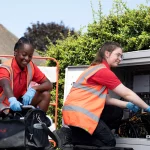

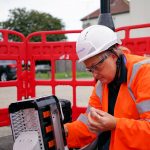
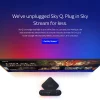
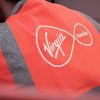


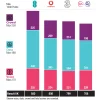







































Given the amount of kit that lets clueless end users use Band C / 5.8GHz with no mention of a licence, I expect the licence was just a waste of money anyway..